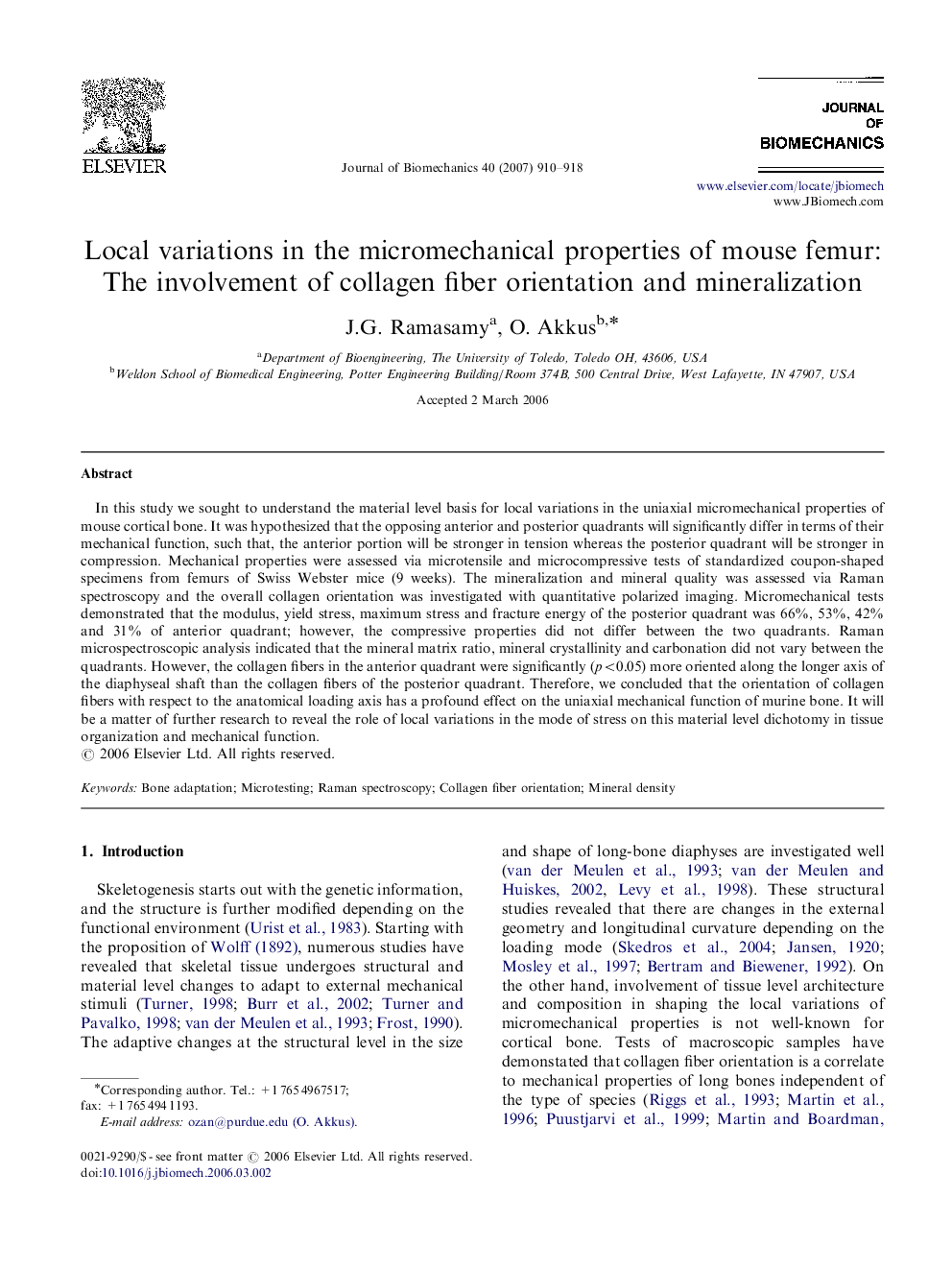| Article ID | Journal | Published Year | Pages | File Type |
|---|---|---|---|---|
| 874645 | Journal of Biomechanics | 2007 | 9 Pages |
In this study we sought to understand the material level basis for local variations in the uniaxial micromechanical properties of mouse cortical bone. It was hypothesized that the opposing anterior and posterior quadrants will significantly differ in terms of their mechanical function, such that, the anterior portion will be stronger in tension whereas the posterior quadrant will be stronger in compression. Mechanical properties were assessed via microtensile and microcompressive tests of standardized coupon-shaped specimens from femurs of Swiss Webster mice (9 weeks). The mineralization and mineral quality was assessed via Raman spectroscopy and the overall collagen orientation was investigated with quantitative polarized imaging. Micromechanical tests demonstrated that the modulus, yield stress, maximum stress and fracture energy of the posterior quadrant was 66%, 53%, 42% and 31% of anterior quadrant; however, the compressive properties did not differ between the two quadrants. Raman microspectroscopic analysis indicated that the mineral matrix ratio, mineral crystallinity and carbonation did not vary between the quadrants. However, the collagen fibers in the anterior quadrant were significantly (p<0.05p<0.05) more oriented along the longer axis of the diaphyseal shaft than the collagen fibers of the posterior quadrant. Therefore, we concluded that the orientation of collagen fibers with respect to the anatomical loading axis has a profound effect on the uniaxial mechanical function of murine bone. It will be a matter of further research to reveal the role of local variations in the mode of stress on this material level dichotomy in tissue organization and mechanical function.
